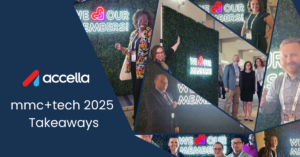How we present ideas is evolving in the world of startups and technology. As a strategist and consultant, I’ve seen the need for a new approach that emphasizes collaboration, rapid prototyping, and the application of proven frameworks. This approach, known as collaborative design sprints, offers a fresh perspective on presenting ideas and working with clients.
The Evolution of Presenting Ideas
Traditional approaches to presenting ideas have served us well for many years. They involve a step-by-step process that allows for careful consideration and refinement of concepts. However, in the dynamic world of website and app technology, time is often of the essence. The gradual process of starting with high-level concepts, moving on to wireframes, and eventually making decisions based on preliminary discussions can sometimes be too slow for the rapid pace of innovation.
It’s not that the traditional approach is wrong or outdated; it’s just that the business landscape has changed. In my work with various clients, I’ve noticed that the slow pace of traditional presentations can sometimes lead to misunderstandings and missed opportunities for creativity.
That’s why we’re advocating for a new approach that merges the best of both worlds. By combining the careful consideration and refinement of traditional methods with the speed and flexibility of modern innovation, we can achieve more effective and efficient results. This approach, known as collaborative design sprints, offers a fresh perspective on presenting ideas and working with clients.
A Fresh Approach: Collaborative Design Sprints
In response to the evolving business environment, we’ve adopted a new approach to presenting ideas: collaborative design sprints. This approach is all about working together with our clients to explore possibilities, drawing from best practices across various industries.
Design sprints involve diving right into discussions of real ideas that may look polished, even if they are just starting points for conversation. This approach allows for quick iteration, testing of concepts, and real-time feedback. It encourages open and constructive dialogue, as clients can see tangible designs and visualize the proposed solutions.
It’s important to note that when clients see a design, they’re not looking at a final product. This is a shift from traditional approaches, and it’s all about collaboration and co-creation. Our dedicated strategy consultants and designers work closely with the client to uncover innovative ideas. We leverage frameworks and best practices from various industries, but the depth and expertise come directly from our clients.
The beauty of this approach is that it combines the best of both worlds. It draws from proven frameworks and best practices while allowing for the flexibility and creativity that startups and innovative companies thrive on. It’s an exciting way to work together, bringing more value and insights to the table right from the start.
Collaboration is Key
The key to successful design sprints is collaboration. As consultants, we bring ideas and strategies to the table, but the client holds the decisions. We’re not experts in every industry, but we are experts in applying frameworks that work. The client provides the industry-specific knowledge and insights that are crucial for tailoring these frameworks to their unique needs.
For example:
- In the case of a civil rights advocacy app, we brought a framework for creating daily habits based on the award-winning book “Atomic Habits” and successful apps in the medical, mental health, fitness, and education spaces. The client connected these concepts to advocacy, providing the nuances and action plans that took advantage of our platform. They still own advocacy.
- In the energy sector, we apply what we know from good user experience and dashboards in the travel, finance, weather, and other loosely-related energy sector companies to managing microgrids for resiliency during storms and efficient power management for homes and municipalities.
- For a healthcare space, we’re working on comprehensive and potentially industry-changing subscription models powered by software and user experiences that people expect now. We’re drawing from successful models in various industries, including Netflix, ClassPass, Forward Health, marketplaces like Uber, and cloud computing services like AWS and Azure.
By working together with our clients, we can achieve tailored and practical solutions that meet their unique needs.
Conclusion
The world of business is constantly evolving, and the way we present ideas needs to keep pace. Collaborative design sprints offer a fresh approach that combines the best of traditional methods with the flexibility and creativity of modern innovation. By working together with our clients, we can achieve tailored and practical solutions that meet their unique needs. This approach is not about pitching or selling; it’s about collaborating and exploring possibilities together. It’s about bringing the best of both worlds – our expertise in applying proven frameworks and the client’s deep industry knowledge – to create innovative solutions that drive success.






